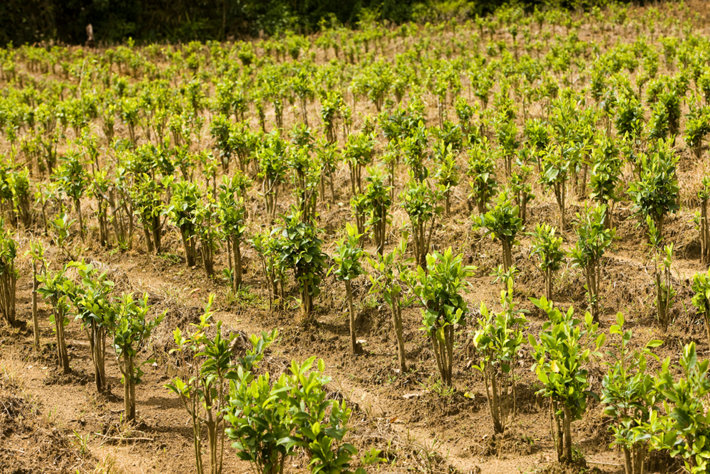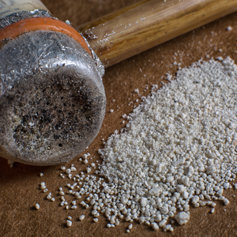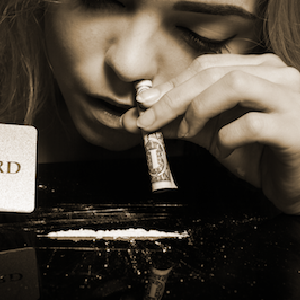Unveiling Cocaine: A Comprehensive Guide to Its Varieties and Associated Risks

Introduction
In this article, we delve into a complex and technical topic: the variability of cocaine products consumed worldwide. We will explore the different factors influencing this variability, including the chemical form of the psychoactive substance, the presence of additives, impurities and residues, and how the product is derived. We will also discuss how these factors affect the physical characteristics of the product, the routes of administration, purity levels, and potential harm.
We will categorize cocaine products into three main families and explain the differences between them.
This article is intended for those seeking an in-depth understanding of the complex nature of cocaine and its various forms. It is a technical subject, but we will strive to make it as accessible as possible. So, get ready to dive into the complex world of cocaine and its many variations.
Understanding the Transformation of the Coca Leaf: An Overview
When discussing the different forms of cocaine found on the market, it’s crucial to understand the intricate processes of its production. These steps alter the final form of cocaine and can affect its methods of consumption and the impact on the human body.
Cocaine goes through several transformation stages, from its origin as a coca leaf to the finished product. Here’s an abstract outline of these stages:
- Coca Leaf: The journey starts with the coca plant, native to South America. The leaves of this plant contain various alkaloids, including the one that gives cocaine its name. These leaves are harvested and readied for the initial stages of cocaine production.
- Coca Paste: The harvested coca leaves undergo a process involving solvents to derive a raw form of cocaine known as coca paste. This extract contains a substantial concentration of cocaine but also includes impurities. It’s worth noting that the substances used at this stage contribute to the overall toxicity of the drug.
- Cocaine Base: The next stage involves additional refining, transforming the coca paste into a cocaine “base.” This stage includes the use of specific chemicals to purify the substance further and alter its properties, making it suitable for certain methods of consumption.
- Cocaine Hydrochloride: The cocaine base then undergoes further processing to create the most widely recognized form of cocaine, which is cocaine hydrochloride. This conversion involves reactions that alter the cocaine base into a salt form, which is more soluble in water and more suitable for certain methods of use.
- Hydrochloride-Based Powders: After cocaine hydrochloride is created, it’s often adulterated with various substances to boost volume and profit margins. These diluting substances can range from harmless compounds like talc or sugar to potentially dangerous ones, like amphetamines. The purity of the final product varies, meaning that consumers are exposed to risks not only from the drug itself but also from other potentially harmful additives.

Varieties of Cocaine Products and Their Consumption
After understanding how cocaine is produced and the substances that may be mixed into the final powder, it’s important to note that the cocaine products consumed worldwide are varied. This variety is due to several factors, including the chemical form of cocaine (base or salt), the presence of added substances, and how the product is derived.
We can classify cocaine products into three main categories:
Manufacturing Process Products: These are the initial products derived from the coca paste and cocaine base during the early stages of cocaine production. They are less refined than cocaine hydrochloride (powder cocaine) and contain a higher level of impurities.
In South America and neighboring regions, these products are more commonly used due to their lower cost and easier accessibility. They are sold under various street names, including “basuco,” “pasta base,” “merla,” “paco,” and “crack.” However, it’s important to note that these terms don’t always refer to the same product and can vary in their composition, which can lead to varying effects and health risks for users.

Basuco, for example, is a semi-refined form of cocaine that contains a significant concentration of cocaine, usually between 30% and 80%. It’s typically smoked, often mixed with tobacco or marijuana. The high from basuco is intense but short-lived, leading users to consume it repeatedly over a short period, increasing the risk of addiction.
Pasta base, also known as “paco,” is similar to basuco but often contains additional toxic substances, such as residues from the solvents used in cocaine production. Like basuco, pasta base is typically smoked and provides a quick, intense high.
Merla is another variant of cocaine base that is less refined and contains a higher level of impurities. It’s often smoked, providing an intense but short-lived high.
The term “crack” is used in different contexts. In North America, it refers to a freebase form of cocaine that has been processed from cocaine hydrochloride. However, in some South American regions, “crack” can refer to various forms of cocaine base products.
The consumption of these manufacturing process products is often associated with severe health risks due to the presence of impurities and the harmful methods of consumption, such as smoking. The intense but short-lived high can also lead to frequent use and a higher risk of addiction.
Cocaine Hydrochloride Products: This is the most common and widely recognized form of cocaine, often referred to as “powder cocaine” or simply “coke.”

The primary methods of consuming cocaine hydrochloride are snorting, injecting, or swallowing:
- Snorting: This is the most common method of consumption. The user inhales the powder through the nose, where it is absorbed into the bloodstream through the nasal tissues. The effects are felt within a few minutes and last for about 15 to 30 minutes. Regular snorting can lead to damage to the nasal and sinus cavities and loss of sense of smell.
- Injecting: Some users dissolve cocaine hydrochloride in water and inject it directly into the bloodstream. This method produces effects more quickly and intensely than snorting, but it also carries a higher risk of overdose and transmission of diseases like HIV and hepatitis C through shared needles.
- Swallowing: Also known as “oral ingestion,” this method involves consuming cocaine by mouth. The effects take longer to set in but last longer. This method is less common and is associated with a lower risk of addiction compared to snorting or injecting. However, it can still lead to significant health problems, including damage to the gastrointestinal tract.
Regardless of the method of consumption, cocaine hydrochloride is a powerful stimulant that can lead to serious health issues, including heart disease, stroke, and addiction.
Freebase Products: These are a type of cocaine product that is created by converting cocaine hydrochloride, the powder form of cocaine, back into a base form. This process involves removing the hydrochloride component, resulting in a product that is almost pure cocaine.
The conversion process typically involves mixing cocaine hydrochloride with a solution of baking soda and water, then heating the mixture to remove the hydrochloride. The remaining substance is a form of cocaine that is highly concentrated and free of its base, hence the term “freebase.”
Freebase cocaine is a solid, rock-like substance that is typically smoked. When heated, it vaporizes at a lower temperature than cocaine hydrochloride, allowing it to be inhaled as a smoke. This method of consumption allows the drug to reach the brain very quickly, often within seconds. This results in a sudden and intense high, which is often described as more potent than the high from snorting cocaine hydrochloride.
However, this intense high is typically short-lived, often lasting only a few minutes. This can lead to a cycle of repeated use in a short period of time, increasing the risk of addiction. Additionally, because freebase cocaine is almost pure cocaine, it carries a higher risk of overdose compared to other forms of the drug.
In North America and Europe, the most common form of freebase cocaine is “crack.” Crack is made by cooking cocaine hydrochloride with baking soda and water until it forms into solid “rocks.” These rocks are then broken down into smaller pieces and sold as crack cocaine. Like other forms of freebase cocaine, crack is typically smoked, providing a rapid, intense high.

Despite the intense high, freebase cocaine products, including crack, carry significant health risks. These include severe damage to the lungs, heart problems, mental health issues such as anxiety and paranoia, and a high risk of addiction.
The Hidden Dangers of Cocaine: Beyond the Glamorous Image
In conclusion, while cocaine may often be portrayed in the media and popular culture as a “rich man’s drug” or a party substance, the reality is much darker. The many transformation stages of cocaine, involving the use of toxic chemicals, as well as the addition of various substances to increase profits, make this product extremely dangerous.
Each time cocaine is consumed, the user exposes themselves not only to the effects of cocaine itself but also to a multitude of other potentially harmful substances. These substances can vary significantly depending on the specific product and how it was prepared. Moreover, the way cocaine is consumed – whether by snorting, smoking, or injecting – can also have a significant impact on health risks.

It is therefore crucial to understand that behind the glamorous image of cocaine lies a much darker reality. Cocaine is not a harmless substance – it’s a powerful drug that can have devastating effects on physical and mental health. Moreover, the variability of cocaine products means that users can never be sure of what they’re actually consuming.
In the end, the best way to protect oneself from the dangers of cocaine is not to consume this drug. It’s important to remember that behind the glamorous image lies a much darker and potentially deadly reality.
Source: UNODC, Cocaine – A Spectrum of Products, Cocaine Insights 2 (Vienna: UNODC, 2021). EMCDDA and Europol (2019), EU Drug Markets Report 2019, European Monitoring Centre for Drugs and Drug Addiction and Europol, Publications Office of the European Union, Luxembourg.


